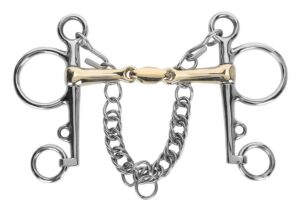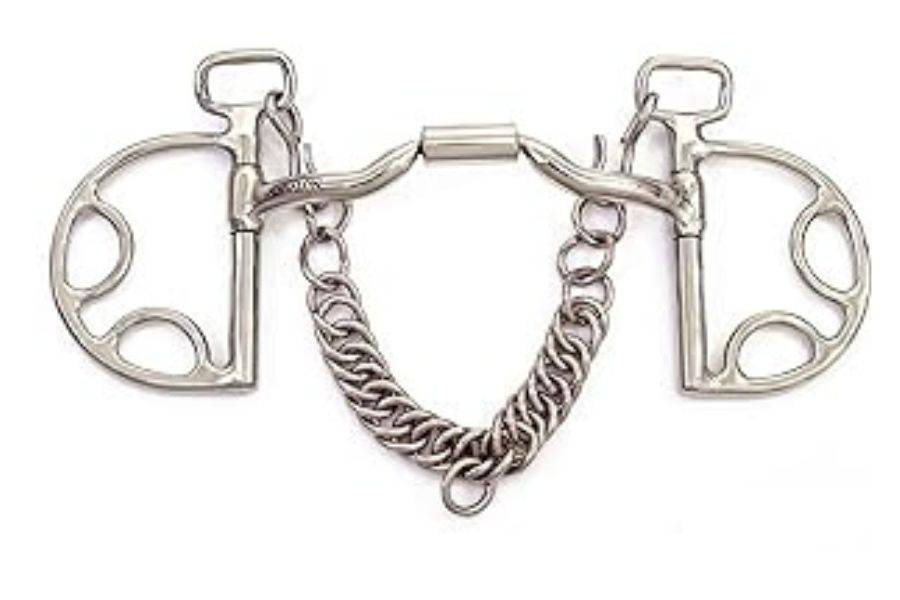Table of Contents
When choosing the right bit for your horse, it’s important to consider various factors such as the horse’s temperament, the rider’s experience, and the specific riding discipline.

Two popular bit choices among equestrians are the Pelham bit and the Kimberwick bit. Both have unique characteristics that can benefit different types of horses and riders.
This comprehensive comparison will help you decide which bit is better for your homestead based on important criteria.
History of Pelham Bits
The Pelham bit, named after its inventor Roger Pelham, has a long history in the equestrian world.
It was originally designed to offer the benefits of both a snaffle bit and a curb bit, providing the rider with varying degrees of control.
Over the years, the Pelham bit has been refined and now comes in various styles to suit different horses and disciplines.
History of Kimberwick Bits
The Kimberwick bit, also known as the Kimblewick or Kinder bit, originated in England. It’s a type of curb bit that offers moderate to strong leverage, depending on how it’s used.
The Kimberwick bit is often used in English riding disciplines, particularly in show jumping and eventing where precise control is required.
Design and Construction
Design Features of Pelham Bits
The Pelham bit consists of a mouthpiece, a shank, and two reins – one attached to the snaffle ring at the mouthpiece and the other to the lower ring at the end of the shank.
The design allows the rider to use it as either a snaffle bit for gentle pressure or as a curb bit for stronger leverage.
Design Features of Kimberwick Bits
The Kimberwick bit features a single rein attached to a D-shaped ring. The mouthpiece is typically jointed or ported, and there’s a curb chain for added leverage.
The bit works by exerting pressure on the horse’s mouth, chin, and poll. The level of pressure depends on where the rein is attached on the D-ring.
Usage and Functionality
How Pelham Bits Work
When used as a snaffle, the Pelham bit applies direct pressure on the horse’s mouth. When used as a curb, it exerts leverage pressure on the horse’s poll, jaw, and mouth.
This dual action gives the rider more control and versatility in communicating with the horse.
How Kimberwick Bits Work
The Kimberwick bit works primarily through leverage. When the rider pulls on the rein, it exerts pressure on the horse’s mouth, chin, and poll, encouraging the horse to lower its head.
The severity of the bit can be adjusted by positioning the rein on different slots in the D-ring.
Suitability for Different Horses
Types of Horses That Benefit from Pelham Bits

Pelham bits are versatile and can be used on a variety of horses. They’re particularly beneficial for strong, forward-going horses that need a bit more control.
They’re also suitable for horses that respond well to curb pressure.
Types of Horses That Benefit from Kimberwick Bits
Kimberwick bits are generally suited to horses that need moderate to strong control, such as those used in jumping or eventing.
They’re also useful for horses that tend to carry their heads high, as the bit encourages a lower head carriage.
Handling and Control
Level of Control Offered by Pelham Bits
With its dual-rein design, the Pelham bit provides a high level of control. The rider can use the snaffle rein for gentle cues and the curb rein for stronger signals.
This makes the Pelham bit a popular choice for disciplines that require precise control, like dressage and show jumping.
Level of Control Offered by Kimberwick Bits
The Kimberwick bit offers moderate to strong control, depending on how it’s used. With the rein attached closer to the mouthpiece, it acts more like a snaffle, providing direct pressure.
When the rein is attached further down the D-ring, the bit works as a curb, providing more leverage.
Rider Experience Level
Suitability of Pelham Bits for Various Rider Skill Levels
Due to its dual-rein design, the Pelham bit requires a certain level of skill to use effectively. It’s best suited to experienced riders who can manage and differentiate between the two reins.
Novice riders may find it challenging to use effectively.
Suitability of Kimberwick Bits for Various Rider Skill Levels
The Kimberwick bit, with its single rein design, is easier to handle than the Pelham. This makes it a good choice for less experienced riders or for those transitioning from a snaffle to a curb bit.
However, due to its potential severity, it should still be used with care and understanding.
Comfort and Horse Reaction
Horse’s Comfort and Reaction to Pelham Bits
The horse’s comfort with a Pelham bit depends largely on the rider’s hands. In skilled hands, a Pelham can be a comfortable bit that provides clear communication.
However, if used harshly, it can cause discomfort. Some horses may also find the dual-pressure confusing.
Horse’s Comfort and Reaction to Kimberwick Bits
Many horses respond well to Kimberwick bits, particularly those that accept curb pressure. However, like any bit, if used improperly, it can cause discomfort.
The jointed Kimberwick can pinch the horse’s mouth, so it’s important to ensure a good fit.
Maintenance and Durability

Care and Maintenance of Pelham Bits
Pelham bits, like all horse tack, require regular cleaning to remove saliva, food particles, and dirt.
Stainless steel Pelham bits are generally easy to clean with warm water and mild soap, and they don’t rust easily, making them quite durable.
However, the two-rein design might require a bit more time in upkeep.
Care and Maintenance of Kimberwick Bits
Kimberwick bits also need regular cleaning for the same reasons. They are typically made of durable materials like stainless steel or copper.
Their simpler design makes them slightly easier and quicker to clean compared to Pelham bits. Copper bits may tarnish over time but can be polished to maintain their appearance.
Price and Availability
Cost and Availability of Pelham Bits
Pelham bits can vary widely in price depending on the material, brand, and design. They are generally more expensive than basic snaffle bits due to their complex design.
However, they are widely available in most tack shops and online equestrian stores.
Cost and Availability of Kimberwick Bits
Kimberwick bits are usually moderately priced, falling somewhere between basic snaffle bits and more complex bits like the Pelham.
They are also commonly available in tack shops and online. The availability of different styles and sizes may vary depending on the region and the specific demand of the local equestrian community.
Conclusion
Both the Pelham and Kimberwick bits offer unique advantages that can benefit different types of horses and riders. The key is understanding your horse’s needs and your own riding skills.
Remember, the bit is just a tool for communication – it’s the rider’s hands and knowledge that determine its effectiveness.
Always consider professional advice when choosing a bit to ensure the comfort and well-being of your horse.






![Screws or Nails for Framing - Which Should I Use? [Guide] Screws or Nails for Framing - Which Should I Use? [Guide]](https://homesteadandprepper.com/wp-content/uploads/2021/10/Nails-or-screws-for-framing-150x150.jpg)


